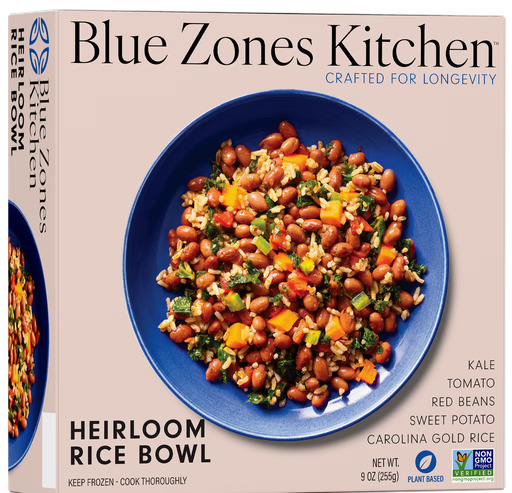Brands in the food industry face an approaching awareness of the risks associated with ultra-processed foods (UPFs). This puts ready meal health perceptions in the spotlight, with brands tasked to ease concerns that translate into preferences.
We’ve seen that consumers in Ireland want healthy ingredients clearly visible when purchasing a ready meal—the leading purchase factor. Yet, almost two-thirds in the US and 44% in the UK believe that ready meals are not healthy enough for regular use.
This creates a gap in how consumers want to use ready meals, and how they currently perceive them in meeting needs. In this case, a need for ready meals to be healthy. With widespread consumption, brands must align their products and messaging with the ready meal trends driving consumer expectations.


We’ll return to health perceptions, but first a look at the global ready meal industry performance.
Discussing global trends, this article uses “ready meal” and “prepared meal” interchangeably and defines these as a complete, usually pre-cooked meal that is either refrigerated, frozen, or shelf-stable.
Ready Meal Industry Performance
How big is the global ready meals market? Performance varies across markets. The US prepared meal industry dipped slightly in 2024, reflecting continued economic caution. Contrasting this, China’s ready meal production volume has increased, with a quarter of Chinese consumers expecting to purchase more in the future. With US production rates static, this likely reflects the maturity of the US market, whereas China is in a rapid growth phase.
It’s not surprising then that China is leading global ready meal production. Countries like India, South Korea, Brazil, and Thailand are also catching up. These countries represent some of the most significant observed Compound Annual Growth Rates (CAGR) for ready meals. With market drivers varying—from India’s rapid urbanisation and growing workforce to Thailand’s rise of convenience stores—it becomes clearer with growth in these regions that ready meals are no longer only a Western demand.
Mintel APAC analyst Jolene Ng highlights this with Vietnam’s rising convenience store trend that aligns with Thailand and bolsters the placement and scaleability of ready meals.


Image source: Pexels
But what drives the growth of the prepared meal industry from the consumer perspective? With minimal preparation, global ready meal growth mainly revolves around convenience for the many consumers that need a complete meal, quickly.
Why Do Consumers Buy Ready Meals?
You close the front door after an exhausting day in the office and would happily collapse on the sofa, but you’re hungry; dinner is not served. Housework is waiting. When the options are to cook from scratch or effortlessly heat a pre-selected ready meal, it’s less of a choice, and much more of a necessity for consumers. The key driver here is convenience. For instance, those eating prepared meals in the US cite saving time as the main reason for increasing their usage. However, brands will want to integrate reasons beyond convenience to stand out.
Besides convenience, what are the key ready meal trends driving consumer purchase choice?
To explore different cuisines
Trial of new products is important in any food category, but prepared meals are especially crucial for this. Providing a way to taste unexplored cuisines without the need to cook from scratch can not only capture initial interest but encourage repeat purchases, too.
In the US, global cuisines show promise, with around a quarter of consumers showing interest in prepared meals with these concepts. The UK already has widespread adoption with close to half trying world cuisines through ready meals.
Thai consumers show enthusiasm for Japanese food in ready meals across age groups. As revealed in our Global New Products Database (GNPD), unfamiliar flavours like Sri Lankan and Lebanese are also appearing in Japanese ready meal launches, indicating product diversification by brands.
We can see a global ready meal trend appearing; consumers want to adventure with their taste buds and the overall experience. Introducing unique and novel international flavours can help brands tap into this trend and attract consumers.
To illustrate this point with an example, US brand Blue Zones Kitchen centres on diets derived from “Blue Zones”: regions across the world with observed longevity and health in their citizens.


Image source: bluezoneskitchen.com Data source: Mintel GNPD
Because they’re cost effective
To dine in, or out? For the budget-conscious, it may seem that ready meals are usually going to be the lower-cost option. Restaurant menu prices have previously risen in line with many factors, such as inflation. However, ready meals aren’t free from price fluctuations. And that comes with scrutiny, with a third of Brazilians saying they’re eating less ready meals because they’re too expensive.
Brands needn’t compete merely on price in response. Appealing effectively means adding value with a combination of desired attributes. Consumers don’t want to compromise on quality, and brands don’t need to.
For example, ready meals can be inspired by the restaurant industry. Almost seven out of 10 Canadians agree that “prepared meals can be a good alternative to restaurant meals”, indicating that they can be positioned as a cost-effective restaurant-style meal. While not necessarily identical to restaurant quality, effective innovation with gourmet recipes that replicate typical restaurant dishes can pique the interest of frequent diners, and promotions can push these ready meals into baskets.
Balancing price sensitivities with product quality means combining desired attributes.
For health and nutrition
In line with an overall global shift towards health and wellness since the COVID-19 pandemic, consumers are increasingly paying attention to health and nutrition claims in food. Nearly two in three UK adults report trying to eat healthily all or most of the time, indicating that the focus on health remains strong. Plant-based UK ready meal brand Allplants is responding by using “balanced by nutritionist” messaging to bolster health–specifically nutrition–claims made on-pack. Additionally, Allpants addresses concerns about ultra-processed foods directly on their website, further aligning with the growing demand for transparency and healthier meal options.


Image source: allplants.com
There’s also a demand for brands that support health aspirations. Almost 61% of Germans prefer food and drink brands that promote healthy lifestyles, indicating a potential space for brands to occupy. Time is often stated as a key barrier to pursuing a healthy lifestyle, allowing ready meal brands to promote the convenience aspect of ready meals to help consumers overcome this barrier with quick and healthy meal solutions.
Over two-thirds of UK adults agree that brands should support them in making healthy food choices, providing a reason for brands to take the lead on health. Some key UK retailers are already stepping up. Tesco and Sainsbury’s, for example, have voluntarily implemented restrictions on volume price promotions of high in fat, sugar, or salt (HFSS) food and drink products ahead of government impositions of the same, due to be brought in later.
With consumers wanting to see brands take the initiative on health and nutrition in food, ready meal brands have a key opportunity to align evolving health perceptions with their product innovation and marketing efforts.
What’s Next for the Ready Meal Industry?
The ready meal trends discussed indicate that consumers are seeking more from pre-prepared plates, and they expect brands to entice them with strategies that match their evolving preferences. Beyond convenience, balancing cost, health, and exploratory natures will likely result in product trials for both new and established ready meal brands.
With a clearer view of how the global industry is performing, and the key trends driving interest and growth, you can cook up a strong foundation for your insight strategy, positioning your brand to meet the demands of today’s market.
Want to know more about Mintel?
Browse our ready meals market research and subscribe to our free newsletter, Spotlight.
24World Media does not take any responsibility of the information you see on this page. The content this page contains is from independent third-party content provider. If you have any concerns regarding the content, please free to write us here: contact@24worldmedia.com

